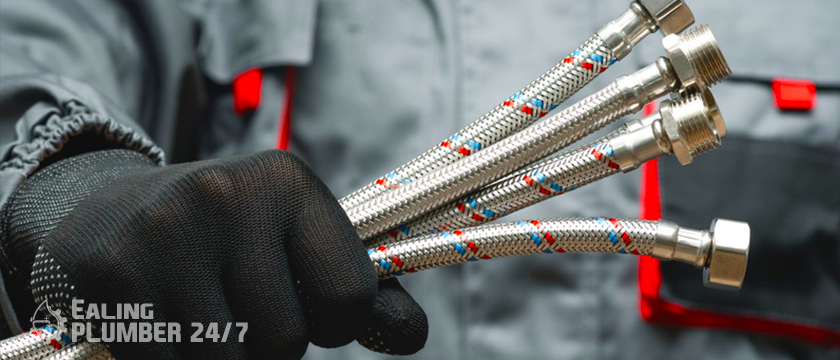
19 Jan. 22
What Is The Toilet Flange?
The closet flange is the mechanical connection between the toilet drain and the drainage system in your home. If this connection is broken or improperly installed, it can be a real pain. It also serves as a stable floor mount for your toilet. The flange is typically made of PVC, copper, steel, or brass pipe and is joined to the bathroom floor by a metal or plastic ring. A wax ring is then used to seal the flange to the drain of your toilet, preventing leakage.
Depending on the size of the drainpipe, toilet flanges should be three or four inches in diameter. The flange should be able to slide over the pipe or fit snugly inside of it. The pipe length should be adjusted according to the thickness of your floor finishing. Using a flange with the incorrect size diameter or height can cause problems during installation or leaks during use.
Recognize the Warning Signs
We recommend that you inspect the area around your toilet on a regular basis for signs that something is wrong with the flange. Furthermore, any of these symptoms can be caused by other major plumbing issues. If you notice any of these signs and need assistance in determining the cause, our heating engineer ealing team of experts is here to assist you!
Symptoms of potential flange damage include:
- Any water leaking from the base of your toilet
- Noxious odors
- A shaky toilet that rocks or shifts
Problems with the flange that are frequently encountered:
A flange that does not sit flush with the finished flooring. If you’re planning to or have recently redone your bathroom’s flooring, don’t forget about the flange! Toilet flanges work best when they are tightly fastened and flush with the finished flooring. Securing the flange is an important step in refinishing a bathroom floor that, if skipped, can lead to leaks. To ensure that the toilet flange is at the proper level, you may need to adjust the height by cutting the pipe or using a flange extender.
A clogged or blocked flange. Clogged flanges can cause toilet backups. It’s a simple fix if you can get to the blockage and have the right tools. Otherwise, contact your friendly neighborhood plumber. Flange is cracked or broken. If you notice a lot of water pooling at the base of your toilet and inspect it, you’ll discover that your flange is cracked or broken, and you’ll need to replace it. Make sure to properly measure your drain pipe and drain to ensure you get the right size replacement flange kit.
Wax rings that are loose or broken. A loose or damaged wax ring, which breaks the waterproof seal, is another common cause of pooling water. Replacing a toilet’s wax ring is simple, but it’s critical to do it correctly to avoid the problem from recurring.
How to Replace a Toilet Flange
The best way to replace a toilet flange is to hire a licensed professional. We can ensure that the job is done correctly in order to avoid problems later on.
If you are replacing the flange on your own, you must take all necessary precautions and have all necessary tools. Check that all of the parts fit properly and that all of the bolts are secure and tight. Follow the instructions below:
- Turn off the water supply and disconnect the hose from the toilet.
- Empty the toilet bowl and flush until all of the water has been drained.
- Remove the toilet carefully by detaching it from the floor.
- Take the wax ring off the flange.
- Remove and clean the flange after it has been unbolted from the floor.
- Use a toilet flange extender or cut the pipe if necessary to ensure the flange is at the proper height.
- Attach a new flange to the drainpipe, ensuring that it is flush with the finished flooring.
- Replace the wax ring around the drain on the toilet’s bottom.
- Replace the toilet on the flange, pressing down firmly to seal the wax ring to the flange.
- Reinstall the toilet, connect the water hose, and turn the water back on.
- Check for leaks and flush to ensure that it is working properly.


